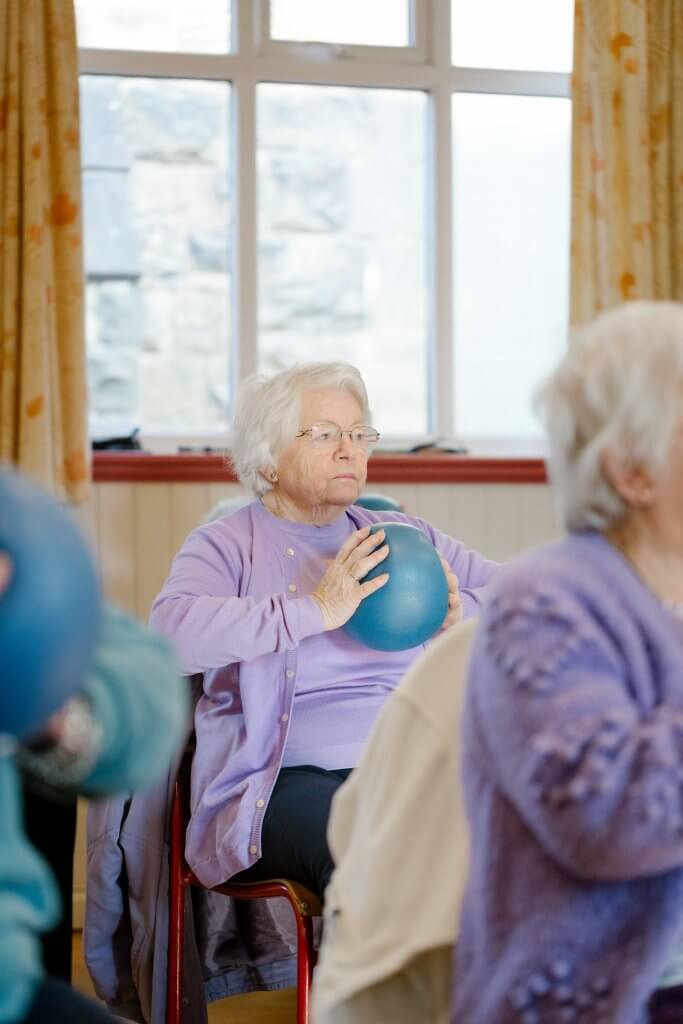Staying active when living with Parkinson’s
We all know that staying active improves our physical and mental health. For those living with Parkinson’s, activity and exercises should focus on strength, balance and flexibility.
One in 37 people alive today in the UK will be diagnosed with Parkinson’s, and it is the fastest growing neurological condition in the world. There are many specific symptoms with the condition such as Bradykinesia, Rigidity, Freezing and Low Blood Pressure which can all be targeted through exercise.
Whether you choose to stay active at home or join an exercise class there are many online and in person sessions available to you (and your family) to keep everyone moving safely.
Your environment
It’s important to look at your environment before starting out on any exercise programme.
Make sure that there is enough space – move loose rugs and furniture if you choose to exercise at home.
Wear comfortable loose clothing and sensible shoes or trainers with a good grip.
Keep a sturdy chair or support handy during the entire session to hold on to, sit or take a rest.
The room should be at a comfortable temperature and not too hot – ask the event class instructor to increase the air conditioning, or open a window if you’re at home. Keep water handy to rehydrate during and after the exercise session.
And finally, make sure you have any medication or inhalers with you and, especially if exercising at home, a mobile phone and emergency numbers.

Targeting Parkinson’s symptoms through activity
As Parkinson’s UK says, there are certain exercises and activities that can help with your specific symptoms.
Bradykinesia tends to affect one side of the body more than the other. The side most affected by Parkinson’s will tire more quickly. People with Bradykinesia can benefit from trying to keep both sides of their body working evenly when undertaking resistance exercises such as weights or bands. This also applies to using machinery such as cross-trainers or rowing machines.
Rigidity can stop muscles from stretching and relaxing. A good stretch can really help! When walking to the kitchen to make a cup of tea, stretch up tall each time you stand. If you’ve been sitting for a while, twist your body from side to side two to three times then swing each leg backwards and forwards to loosen up.
Freezing is a common symptom of Parkinson’s: the feeling that your feet are glued to the ground. This can happen more often in a home environment than in a larger dedicated exercise space. Using visual cues or simply the tune of your favourite song, you can get a good stepping and walking motion.
If you have low blood pressure, exercising on the floor can cause dizziness. Try seated sports or exercising on your bed initially until you become fit enough to get off the floor safely.

As with all exercise, it is incredibly important that you warm up properly before each activity to make sure your body is ready for the task.
It’s recommended that you do about 2.5 hours of exercise each week to help with balance, strengthening through aerobic exercise. Walking is one of the easiest ways to get active and can still be done around the home and garden.
Building activity into your daily life using movement and exercise is also a great way to break up your day. Whether you stand up when taking a phone call or dance when getting dressed – you choose the activity that’s right (and enjoyable) for you to improve your physical and mental health.
Whether you are newly diagnosed, and your symptoms are mild or you’re managing complex physical challenges due to your symptoms, there are tailored programmes available online and in person to keep you active.
Learn more about our specialist options for Parkinson’s and other neurological care delivered in your own home.
